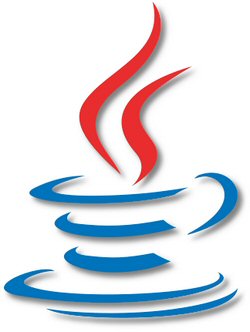Introduction to Java EE (Part 1)
 What is Java EE ? What is Java EE ?
Java EE is not Java. The term "Java" evidently referring to a language, but also a platform: His
full name is "Java SE" for Java Standard Edition, and was formerly shortcut
"J2SE". It consists of many libraries or APIs: For example java.lang, java.io,
java.math, java.util, etc.. In short, all these libraries you should already
know that contain a significant number of classes and methods ready to perform
all kinds of tasks. For more on Java, check out
Introduction to Design Patterns.
The term "Java EE" means Java Enterprise Edition, and was formerly shortened
to "J2EE". Meanwhile it makes reference to an extension of the standard
platform. In other words, the Java EE platform is built on Java and the Java SE
platform language, and it adds a lot of libraries completing a whole lot of
features that the standard platform does not meet in origin. The main objective
of Java EE is to facilitate robust and distributed web application development,
deployment and running on an application server. Java EE is not JavaScript
While Java EE allows the creation of web applications, it does not take much
to be confused with Javascript, often shortened to "JS", which is also heavily
used in web applications. These are two completely different languages, whose
only resemblance are their name. So do not kid yourself, and when you hear of
scripts Java , remember that it simply refers to the Java code, and especially
not the Javascript code.
Above all, we must not confuse the internet and the web:
- Internet is the network, the physical medium of information. It is a set of
machines, cables and network items of all kinds scattered across the globe;
- The web is only a portion of the content available on the internet. You know
and use other content, such as email or instant messaging.
A website is a set of web pages (themselves made of HTML, CSS, JavaScript
files, etc..). When developing and publishing a website, it actually puts online
content on the internet. There are two types of sites:
-
Static websites: These are sites whose content is "fixed", it can only be
changed by the site owner. They are made using HTML, CSS and Javascript
technologies only.
- Dynamic websites: These are sites whose content is "dynamic" because the
owner is not the only one who can make a change! In addition to the languages
mentioned above, they involve other technologies: Java EE is one of them!
When a user visits a site, what happens behind the curtain is a simple
exchange between a client and a server.
- The customer: In most cases, it is the browser installed on your computer.
Remember that this is not the only way to access the web, but it is the one that
interest us in this article.
-
 Server: This is the machine on which the site is hosted, where the files are
stored and web pages are generated. Server: This is the machine on which the site is hosted, where the files are
stored and web pages are generated.
The communication that takes place between the client and the server is
governed by well-defined rules: The HTTP protocol . Let us give more detail, and
look what has been a simple exchange:
- The user enters a URL in the address bar of your browser;
- The browser sends an HTTP request to the server asking for the page;
- The server receives the request, the interpreter and then generates a web
page that goes back to the client through an HTTP response;
- The browser receives this response through the final web page that displays
to the user.
What to understand and remember of all this:
- Data is exchanged between the client and server via HTTP;
- The client
understands only presentation languages of information, in other words the
HTML, CSS and Javascript technologies;
- Pages are generated on the server dynamically from the source code of the
site.
How does it work?
The customer only receives web pages, display the user's actions and transmits
it
to the server. You already know that the languages used to format the data and
display it to the user are HTML, CSS and possibly JavaScript. They have an
important common feature: They are interpreted by the browser directly on the
client machine. Moreover, the client is only able to understand these few
languages, nothing more! The server also has technologies of his own, that only
him can understand: A full battery with the ultimate goal of generating web
pages to send to the client, with all treatments that it may involve to the
passage: Analysis data received via HTTP, processing data, storing data in a
database or files, data integration in the design.
But unlike of HTML & CSS couple which is a must standard for formatting web
pages, there are several technologies that can process the information on the
server. Java EE is one of them, but there are others: PHP, NET, Ruby on Rails
and Django, to mention only the main ones.
How to choose the technology best suited to your project?
It is indeed a very good question: How to decide among this range of
possibilities? This debate is almost endless. However, in real life the choice
is often influenced or dictated by
- Your own experience, if you have already developed in Java, Python or C #
before, it seems prudent to point respectively to Java EE , Django and NET.
- Your needs: development speed, low resource usage on the server, responsive
community supporting technology, the extent of documentation available online,
cost, etc.
Principles of operation
 We have discovered that in order to communicate, the client and the server
must talk through HTTP. We already know that to the client side, the browser
takes care of. On the server side, which is in charge? It is a component that is
logically called HTTP server. His job is simple: it must listen to everything
that happens on the port used by the HTTP protocol on port 80, and scrutinize
every incoming request. That's all he's doing. It is basically a communication
interface with the protocol. We have discovered that in order to communicate, the client and the server
must talk through HTTP. We already know that to the client side, the browser
takes care of. On the server side, which is in charge? It is a component that is
logically called HTTP server. His job is simple: it must listen to everything
that happens on the port used by the HTTP protocol on port 80, and scrutinize
every incoming request. That's all he's doing. It is basically a communication
interface with the protocol.
Being able to talk via HTTP is good, but our server should allow performing
other tasks. Indeed, once the HTTP request read and analyzed, we must also treat
its contents and possibly return a response to the client accordingly. You
probably already know that this is largely your responsibility: The code you
write will decide what to do when such a request is coming! But as I tell you
this, a standard HTTP server can not handle your application, it is not his job.
We need a more comprehensive solution: This component, which will be
responsible to run your code in addition to the work of the HTTP server, is
called the application server. Give an exact definition of the term is
difficult. What we can remember is that this server includes an HTTP server, and
adds the management of various types of objects through a component that we will
for now appoint the container.
Specifically, the application server will:
- Retrieve HTTP requests from clients;
- Put them in boxes, objects, that your code will be able to handle;
- Get these items in the mill that is your application via the container;
- Return HTTP responses to the clients, based on objects returned by your
code.
Again, there are several on the market that can be cut into two sectors:
- Owners and paid solutions: WebLogic and WebSphere, respectively derived
from Oracle and IBM ,are the references in the field. Used extensively in the
banking and finance in particular, they are both strong, finely configurable and
very expensive.
- Free solutions: Apache Tomcat, JBoss, GlassFish and Jonas are the main
representatives.
How to choose among all these solutions?
Apart from the issues of costs that are obvious, other parameters may
influence your decision include for example the speed of loading and execution,
as well as the amount of supported technologies. In our case, we start from
zero: For example, a light and free basic application server, will be good.
There is just one that meets all our needs perfectly: Apache Tomcat.
Programming
Introduction to Java EE (Part 1)
How the Google App Engine Works
WSDL - Web Service Description Language
SOAP: Simple Object Access Protocol
Initiation to Cryptography and Encryption to Secure Data
Introduction to Design Patterns in Java
How To Write Efficient Programs in Java
Proper Management of Logs in .Net
How To Remove FaceBook Action Ids From URL |